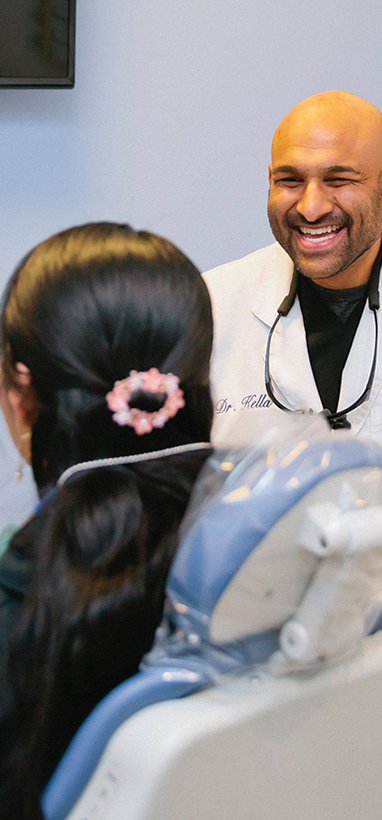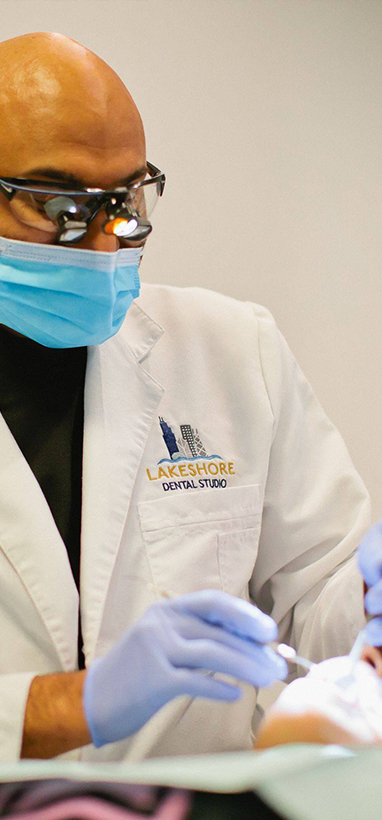5505 N. Clark Street Chicago, IL 60640

What Is the Effect of Sugar on Your Child’s Dental Health?

Do you have a little one with a sweet tooth that just won’t quit? As much as we all love indulging in sugary treats, it’s important to understand the impact of sugar on your child’s teeth. From cavities and decay to long-term dental issues, there’s more at stake than just satisfying those cravings. In this blog post, we’ll explore the effects of sugar on oral health and share tips for keeping your child’s smile healthy and bright. So sit back, grab a glass of water (no soda!) and let’s dive into the world of sweets!
Introduction to Sugars and Their Impact on Child’s Teeth
When it comes to your child’s teeth, sugar is public enemy number one. Sugar is the leading cause of tooth decay in children, and it’s no surprise why: sugary drinks are everywhere, and sweets are a staple of most childhood diets.
The good news is that you can take steps to protect your child’s teeth from the harmful effects of sugar. Here’s what you need to know about sugars and their impact on your child’s teeth:
Tooth decay is caused by bacteria in the mouth that feed on sugars. When these bacteria produce acids, they damage the enamel on teeth, which can lead to cavities.
The more sugar your child consumes, the greater their risk for tooth decay. That’s why it’s important to limit your child’s intake of sugary foods and drinks.
You can help protect your child’s teeth by teaching them proper oral hygiene habits, such as brushing their teeth twice a day with fluoride toothpaste. You should also have them see a pediatric dentist regularly for checkups and cleanings.
Common Sources of Sugar in Children’s Diets
Most children consume too much sugar, which can lead to tooth decay. The most common sources of sugar in children’s diets are:
1. Sweetened beverages: Sodas, fruit juices, and sports drinks are all major sources of sugar in children’s diets. Many of these beverages are also acidic, which can damage teeth.
2. Sweets and desserts: Cookies, cakes, ice cream, and candy are all high in sugar and can contribute to tooth decay.
3. Breakfast cereals: Many breakfast cereals are loaded with sugar, especially those that are sweetened with honey or other sweeteners.
4. Fruit snacks: Dried fruits, fruit leathers, and fruit roll-ups often contain a lot of added sugar.
5. Yogurt: Some yogurts contain large amounts of added sugar, as well as natural sugars from the fruit or other ingredients used to flavor them.
The Effects of Sugar on Children’s Teeth
The effects of sugar on children’s teeth are well documented. Sugar is a leading cause of tooth decay, and it’s not just candy that’s to blame. Foods like cookies, cake, pie, and even some breakfast cereals contain high levels of sugar.
Tooth decay occurs when the bacteria in your mouth convert the sugars in food into acids. These acids then eat away at the enamel on your teeth, causing cavities. The more sugary foods you eat, the greater the risk for tooth decay.
Fortunately, there are ways to protect your child’s teeth from the harmful effects of sugar. First, encourage them to brush their teeth twice a day with fluoride toothpaste. Fluoride helps to strengthen the enamel and make it more resistant to decay.
Second, limit their intake of sugary foods and drinks. Too much sugar can lead to weight gain and other health problems, so it’s important to moderation. Teach your child about the importance of eating a balanced diet and offer healthy snacks like fruits and vegetables instead of sugary treats.
Third, take them for regular dental checkups so that any problems can be caught early and treated accordingly. By following these simple tips, you can help keep your child’s teeth healthy and free from cavities.
Preventative Measures to Protect Your Child’s Smile
One of the best ways to protect your child’s smile is to prevent tooth decay before it starts. Here are some tips for parents:
-Encourage your child to brush their teeth for two minutes, twice a day with fluoride toothpaste.
-Make sure they floss once a day.
-Limit sugary snacks and drinks, including juice and sports drinks.
-Encourage them to eat nutritious foods like fruits, vegetables, and low-fat dairy products.
-Take them to the dentist regularly for checkups and cleanings.
Practical Tips to Reduce Your Child’s Sugar Intake
1. Avoid sugary drinks: Swap sugary drinks for water or sugar-free alternatives.
2. Cut down on sugary snacks: Choose healthier snacks like fruit, unsweetened yogurt, or whole grain crackers instead of sugary cookies or cake.
3. Reduce the amount of sugar in your child’s diet: When cooking at home, use less sugar in recipes and offer smaller portions of sweet treats.
4. Teach your child about the importance of oral health: Explain why it’s important to reduce sugar intake to help keep teeth healthy and prevent cavities.
Conclusion
From this article, we learned that sugar can have a major impact on your child’s teeth. It is important to ensure your child has healthy dental habits and limited sugar intake in order to prevent cavities and other oral diseases. Educating them about the effects of eating too much sugar will help keep their teeth strong and healthy for years to come. With the right knowledge and guidance, you can help protect your child from developing tooth decay due to sugary foods!
FAQs:
Q: How can sugar impact my child’s teeth?
A: Sugar can cause tooth decay by feeding the bacteria that live in plaque. When these bacteria eat sugar, they produce acids that attack and break down tooth enamel. Over time, this can lead to cavities.
Q: What are some ways I can help prevent cavities?
A: You can help prevent cavities by brushing your child’s teeth twice a day with fluoride toothpaste, flossing daily, and eating a balanced diet. You should also limit sugary snacks and drinks, and make sure your child sees a dentist regularly for checkups and cleanings.
Q: What are some signs that my child may have a cavity?
A: Signs of a cavity include pain or sensitivity when eating or drinking, visible holes or pits in the teeth, and dark spots on the teeth. If you notice any of these signs, please contact your dentist right away.










